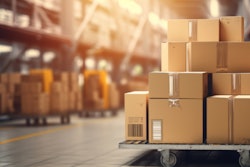
In today's fast-paced and competitive business landscape, efficient warehouse operations are critical to the success of any supply chain. As businesses continue to rely on third-party logistics (3PL) providers to manage their warehousing operations, it’s essential to understand the specific roles 3PLs should play in enhancing warehouse safety.
Overall safety
Ensuring the safety of employees, protection of products, and maintenance of equipment within a warehouse environment is of paramount importance. With warehouse safety concerns hitting news headlines, this topic is a regular conversation among organizations. 3PLs bring a significant value to warehouse operations by promoting a safe working environment through implementing key safety strategies and practices.
Expertise and compliance
One of the primary advantages to partnering with a 3PL provider for warehouse operations is gaining their expertise in compliance with safety regulations and industry standards. 3PLs have a deep understanding of local, state, and federal regulations governing workplace safety. They possess the knowledge to implement best practices and ensure compliance, reducing the risk of accidents and injuries. By staying up to date with evolving safety regulations, 3PLs help warehouse operators avoid costly penalties and maintain a safe working environment.
Employee training and safety culture
A safety-conscious culture is integral to maintaining a secure warehouse environment. 3PL companies prioritize employee training and actively promote safety awareness and compliance among their staff. They invest in comprehensive training programs which provide warehouse workers with the necessary knowledge and skills to perform their tasks safely. Whether the focus is on hazard identification, proper equipment handling, or emergency response protocols, 3PLs foster a culture of safety that permeates throughout the entire warehouse facility, mitigating risks and preventing accidents.
Technology and automation
Modern warehouses are embracing cutting-edge technologies and automation systems to streamline operations and enhance safety. 3PLs should possess the resources and expertise to implement these technologies effectively. Automation reduces the need for manual labor in hazardous tasks, such as heavy lifting or working in high-risk areas. Robotics and conveyors minimize physical strain on employees, lowering the likelihood of injuries. Additionally, advanced monitoring systems, such as video surveillance and sensors, enable real-time identification of potential safety hazards, allowing swift action to be taken.
3PLs have gained significant expertise in utilizing warehouse management systems (WMS) to optimize supply chain operations and enhance overall efficiency as well. A WMS is a critical component of modern logistics management, providing real-time visibility, control, and coordination of warehouse activities. As supply chains become increasingly complex, 3PLs have adapted to leverage WMS to meet the evolving demands of their clients and gain a competitive edge. 3PLs excel in utilizing WMS technology in a variety of ways including:
● Inventory management. WMS allows 3PLs to maintain accurate, up-to-date records of inventory levels and locations. Advanced WMS systems utilize barcode scanning and RFID technology to enable precise tracking of goods from receipt to dispatch. This capability helps 3PLs optimize inventory levels, reduce carrying costs, prevent stockouts, and improve order fulfillment rates, leading to higher customer satisfaction.
● Order processing and fulfillment. 3PLs with robust WMS platforms can efficiently manage and prioritize order picking, packing, and shipping processes. WMS platforms optimize the order fulfillment process by determining the most efficient picking routes, reducing the time and effort required to fulfill orders accurately and on time. This efficiency translates into faster delivery times, reduced lead times, and increased customer satisfaction and loyalty.
● Productivity and labor management. WMS provides real-time data on warehouse performance metrics, such as pick rates, packing accuracy, and order cycle times. Armed with this data, 3PLs can identify areas of improvement and implement strategies to streamline operations, allocate resources effectively, and enhance workforce productivity.
● Full visibility. Shippers can access real-time data through web portals or customized reports, allowing them to make informed decisions and collaborate seamlessly with the 3PL.
3PLs have honed their expertise in using WMS to navigate the challenges of modern supply chain management successfully.
Warehouse layout and design
The layout and design of a warehouse significantly impacts safety. 3PLs excel in optimizing warehouse space and flow, ensuring a safer working environment. They meticulously plan the layout, considering factors such as efficient traffic management, ergonomic workstations, and clear signage. By reducing congestion, improving visibility, and implementing proper storage techniques, 3PLs greatly minimize the risk of accidents caused by collisions, falls, or improper handling of goods while optimizing the flow of materials to and from the warehouse.
Risk assessment and mitigation
Effective risk assessment and mitigation strategies are crucial for warehouse safety. 3PLs conduct thorough risk assessments, identifying potential hazards and implementing measures to minimize their impact. They analyze workflow processes, storage methods, and equipment usage to identify areas of vulnerability. Through proactive measures such as regular safety audits, incident reporting systems, and continuous improvement initiatives, 3PLs ensure that potential risks are promptly addressed, reducing the likelihood of accidents and product damages, and promoting an overall safer warehouse environment.
Emergency preparedness
Regardless of how well-prepared a warehouse is, emergencies can still occur. 3PLs excel in developing robust emergency response plans and implementing safety protocols. They conduct regular drills and simulations to familiarize employees with emergency procedures, ensuring a swift and coordinated response in case of accidents, fires, or natural disasters. By providing adequate training, emergency exits, fire suppression systems, and first aid resources, 3PLs enhance warehouse safety and minimize the potential impact of unforeseen events.
In the dynamic world of logistics and warehousing, prioritizing safety is crucial to protect employees and assets, maintain operational efficiency, and safeguard business reputation. With robust expertise in compliance, commitment to employee training, utilization of technology, emphasis on efficient warehouse design, focus on risk assessment, and robust emergency preparedness, 3PLs contribute significantly to creating a secure working environment.
3PLs play a pivotal role in enhancing warehouse safety for shippers. By partnering with a reputable 3PL that prioritizes a "people first" philosophy, shippers can benefit from their knowledge and experience to optimize safety practices and promote a culture of well-being within their warehouses.



















